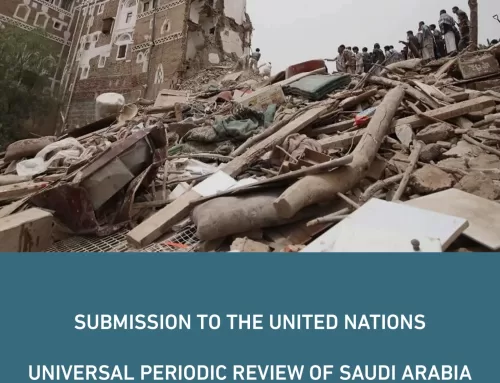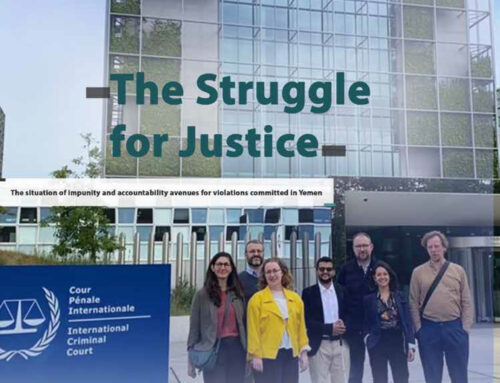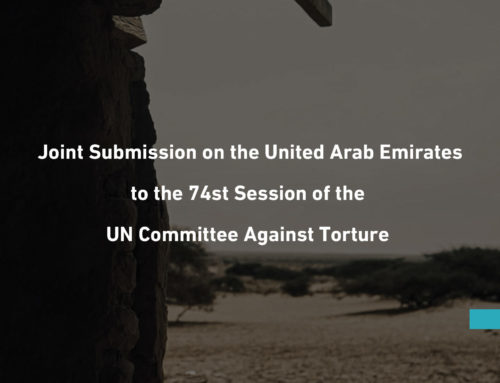Fall of civilians by the landmines laid by the Ansar Allah Armed Group (the Houthis) and Saleh Forces
Wednesday (10 May 2017) – Sana’a
Executive Summary
On 23 April 2016, while 16 civilians were traveling in a rented bus taxi on the road from Taiz country side to Sanaa, a landmine exploded on their bus, killing eight of them, including one child, and wounding eight others, including four children and two women.
This incident occurred in the public road that passes through al-Robaie area in al-Taiziah district southwest of the city of Taiz.
In the eastern Yemeni governorate of Marib, Yemeni citizen Yahya Abdulla Saklaa al-Sharif is still traumatized by the loss of his two children, who went with their third brother and mother to collect firewood in one of the valleys where a mine they were trying to extricate exploded, killing two and causing permanent disability to the third.
At dawn on Saturday, 21 May 2016, in the area of Shaab al-Hashfa’a, district of Harib in Marib governorate, a landmine exploded causing the death of two of Yahya Saklaa children, and the loss of the right eye of his third child.
The father of children victims recounts the incident:
“As usual, my wife and my children – Ahmed, Rowaida, and Nashmi – went out to collect firewood from an area called Shaab Al-Hashfa’a where there are trees that we can cut down. At 7:00 am we heard the sound of a big explosion. I rushed towards the smoke in the valley and when I arrived, I found my wife crying and embracing my two children Nashmi and Rowaida who were injured but still alive, while next to her was Ahmed’s body stained with blood, and wounds are visible on his face, and he was dead. We rushed them to Marib Public Hospital in Marib city, and there my daughter Rawidah died and my son Nashmi was transferred to Saudi Arabia for treatment because his condition was serious and now his condition is improving but he lost his right eye.”
This report, “Concealed Killer”, prepared by Mwatana teams between July 2015 and October 2016, documents the use of landmines in which dozens of civilian victims were killed and wounded.
Monitoring and documentation that Mwatana Organization for Human Rights field team conducted through interviewing the victims or the relatives of landmine survivors shows that during the reporting period, 57 people were killed by mines that Ansar Allah group and Saleh forces used , including 24 children and 4 women. They were killed without being involved at all in the armed conflict in Yemen.
During the preparation of this report, Mwatana organization adopted the investigative field research methodology through verification visits and direct interviews with main sources of information relating to the incidents and the collection of supporting documents. The field research and verification of the information of the cases in this report continued from July 2015 to October 2016.
Mwatana conducted at least 40 interviews in Arabic with survivors, victims’ families, eyewitnesses, medical personnel, paramedics and the competent authorities and specialists in the National Mine Action Program in the conflict areas. In analyzing the report, Mwatana sought the assistance of international experts in the field of International Humanitarian Law and Customary Humanitarian Law, as well as local demining experts who worked in conflict areas.
Article 1 of the Convention on the Prohibition of Anti-Personnel Mines (the Ottawa Convention), signed in September 1997, and ratified by Yemen in September 1998, imposes a comprehensive ban on anti-personnel mines. It also prohibits the use, stockpiling, production, development and transfer of anti-personnel mines and requires the clearance and destruction of these mines, whether stored or planted on the ground.
The Mine Ban treaty defines Anti-Personnel Mines as the explosive devices (“detonated by the victim”). They are designed to be placed under, on or near the ground or other surface area and to be exploded by the presence, proximity or contact of a person. The Second Protocol of The Convention on Certain Conventional Weapons on the Prohibitions or Restrictions on the Use of Mines, Booby-Traps and Other Devices defines the term “Mine” as any munition placed under, on or near the ground or other surface area and designed to be detonated or exploded by the presence, proximity or contact of a person or vehicle.
According to Article 3, paragraph 7, of the Second Protocol of The Convention on Certain Conventional Weapons, It is prohibited in all circumstances to direct weapons to which this Article applies, and include landmines and booby-traps against the civilian population as such or against individual civilians or civilian objects either in offence, defense or by way of reprisals.
In all the cases that Mwatana organization investigated, it was found that the rules of International Humanitarian Law and Customary Humanitarian law, which require implementing special measures to reduce the indiscriminate effects of landmines, were not implemented or followed.
For example, mines have been planted in areas where civilians reside and live without complying with the International Humanitarian Law and Customary International Law generally accepted principles and rules of distinction and proportionality. Also no marks, signs or warnings were posted to alert civilians to the presence of mines in villages and houses and other civilian objects to prevent harming civilians.
In some cases, the planting of mines in civilian villages and homes appeared to have been deliberate targeting because of their opposing positions to a particular warring party, resulting in more killings and civilian casualties, including a number of children.






